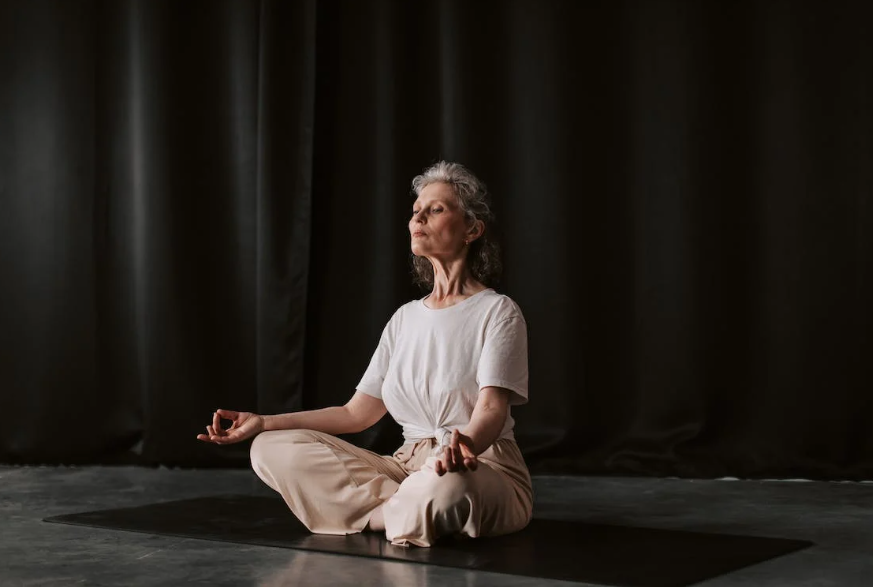Mindfulness vs Meditation
We’ll be able to join both concepts when we better understand them. So first, let’s learn more about what makes them unique, and what it takes to reap the benefits of mindfulness and meditation.

Selfpause Affirmation App
Download the app to get 1,000’s of affirmation meditations and everything you need to write, record and listen to your own.
In this article we will discuss the differences between mindfulness and meditation, the benefits and drawbacks of both approaches, and common misconceptions about both. Our fast-paced world can be draining, and our incessant thoughts can lead to physical illness or mental health issues. A regular meditation practice can improve the quality of our life and help us relax and de-stress.
Differences between mindfulness and meditation

The terms mindfulness and meditation share many similarities and are used in the same context, but there are important differences between them. These two practices have different purposes, but they both practice similar techniques that help you cultivate a positive mental state. In addition to the similarities between the two practices, they are also similar in their practical applications.
The main difference between mindfulness and meditation is the focus. While both involve focusing on the present moment, mindfulness focuses on the quality of being present. In contrast, meditation focuses on the qualities of being present and observing thoughts. In both practices, the goal is to achieve inner peace and psychological and physical wellbeing. While meditation can be a standalone practice, combining it with daily mindfulness practices can yield more positive results.
Both techniques require focusing on deep breathing and training the mind to be more aware of its inner workings. In order to be effective, meditators must set aside a dedicated period of time and remove any distractions from their practice. Practicing mindfulness is an important part of a formal meditation practice, but it can also be practiced while eating, working, or engaging in conversation.
Mindfulness practice requires you to be aware of your intention, including each step of the way. The process is not quick or easy, and it takes time and practice to become skilled. It also helps to have a positive mindset. Meditation can be a great way to start your day. You may even find yourself becoming more positive once you start practicing it.
There are a lot of misconceptions about the differences between mindfulness and meditation. While the two practices share many characteristics, they are not identical. They are often confused, particularly for those who are just starting a meditation or mindfulness practice. It’s important to understand the differences between mindfulness and meditation so that you can choose which one is right for you.
Drawbacks

The benefits of mindfulness have been widely touted, but the drawbacks of this form of meditation are just as real. Many researchers have argued that mindfulness increases the likelihood of false memories, and others are concerned that it will increase the suffering of the person doing it. Other concerns include the tendency to lose one’s sense of reality and to become passive and detached.
Although the research on mindfulness and meditation has been promising, it is still incomplete. For instance, some researchers have found that this form of meditation does not result in significant reductions in stress or overall quality of life. They also found that mindfulness did not have a positive impact on sleep or positive mood, and did not outperform relaxation methods.
Mindfulness can also create internal conflicts. This is because it encourages observing your feelings and responding in a non-judgmental manner. However, not all practitioners experience internal conflicts when practicing mindfulness. This can happen when deeply held feelings are present. While expressing those feelings can provide relief, this is not the ideal way to practice mindfulness.
Mindfulness meditation has also been shown to decrease feelings of guilt. Research suggests that it can lead to more compassionate behavior, including making amends with friends when you hurt someone. However, it can also inhibit generosity, which is important in human relationships. For this reason, it’s important to understand the benefits and drawbacks of mindfulness vs meditation.
Mindfulness is a practice that can cause one to focus on the breath and the sensations in their body. However, it can also lead to analytical thought processes and a tendency to shut down social interactions. This can interfere with the ability to come up with innovative ideas because creativity requires a change in thinking. As a result, there are many corporations now offering mindfulness sessions to employees to reduce stress and increase happiness.
Regardless of the drawbacks of mindfulness, this form of meditation has many benefits and can improve the quality of your life. Meditation can be a great way to begin the day or to release stressful feelings. But before you make the plunge into practicing mindfulness, make sure you choose a meditation style that’s best for you.
Common misconceptions

In the past decade, the practice of mindfulness has grown immensely. Despite its popularity, there are a lot of misconceptions that surround it. Many people think mindfulness is the same thing as meditation, but they’re wrong. Mindfulness is a practice that helps you live in the present, rather than worrying about the past or the future. This book debunks some of those myths. If you have a misconception about mindfulness, read on to get a clearer perspective.
The most common misconception people have about mindfulness is that it is spiritual. While mindfulness is rooted in Eastern practices, it has been developed and refined by psychologists since the late 1970s. Its ‘father’, John Kabbat-Zinn, first used it as part of a stress reduction program. Since then, mindfulness has been the subject of extensive research. It is an evidence-based form of meditation that is now used by top CEOs, parliamentarians, and students alike.
While mindfulness is a good practice for improving overall health, it can also lead to feelings of anxiety. Many people believe that it can help people with chronic pain and stress. Others say that it helps people develop a deeper appreciation of the world. Whatever the case, there are still plenty of misconceptions about mindfulness and meditation.
Mindfulness meditation requires noticing where you are right now and working with the reality of your current situation. For example, if you have a mind full of thoughts, it can be helpful to watch the way it goes from thought to thought. By observing without judgment, you can develop a more objective perspective.
Despite the fact that many people mistake mindfulness for religion, it is actually secular and is not based in any particular religion. It can be practiced by anyone, regardless of religion or belief. Some people have become masters of this practice and find it an integral part of their daily life.
Another common misconception about mindfulness is that it makes you weak. In reality, mindfulness can make you stronger and more resilient. It can help you see difficult thoughts and emotions that may be causing you distress.
Our Top FAQ's
Mindfulness and meditation are related but distinct practices. Mindfulness involves paying attention to the present moment in a non-judgmental way, while meditation involves focusing the mind on a specific object, thought, or activity in order to increase awareness and calmness. Mindfulness can be practiced during any activity, while meditation is typically a separate activity that is set aside for a specific period of time.
Mindfulness and meditation can be practiced independently or in combination with each other. It is possible to practice mindfulness without also meditating, and vice versa. However, incorporating mindfulness into a meditation practice can enhance the benefits of both practices.
Both mindfulness and meditation have been shown to have a range of potential benefits, including reducing stress and anxiety, improving focus and concentration, and increasing feelings of calm and well-being. However, the specific benefits may differ depending on the individual and the specific practice being used. For example, mindfulness may be more effective at reducing stress in the moment, while meditation may be more effective at improving overall well-being over time.
There are many ways to incorporate mindfulness and meditation into daily life. Some common strategies include setting aside dedicated time for meditation, practicing mindfulness while engaging in daily activities such as eating or walking, and using mindfulness techniques to manage stress in the moment. It can be helpful to start with short, regular practice sessions and gradually increase the duration over time.
As with any practice, it is possible for mindfulness and meditation to have potential risks or drawbacks. For example, some people may find that certain meditation techniques exacerbate feelings of anxiety or depression. It is important to approach these practices with awareness and to seek guidance from a qualified teacher or healthcare professional if needed. Additionally, it is important to remember that mindfulness and meditation are not a substitute for medical treatment, and it is always important to consult with a healthcare professional for any health concerns.
